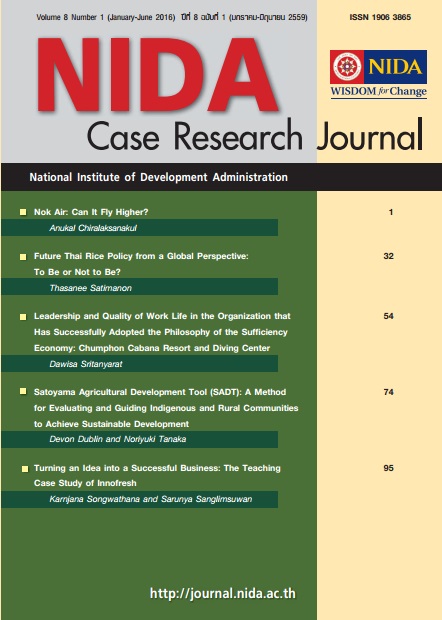Satoyama Agricultural Development Tool (SADT): A method for Evaluating and guiding Indigenous and Rural Communities to achieve sustainable development
Keywords:
Agriculture, Sustainable Development, Satoyama, Indigenous People, Ogasawara Islands, SamaniAbstract
In 2010, the International Partnership for Satoyama Initiative (IPSI) was launched to revitalize the concept of Satoyama in Japan and promote it internationally. However, no mechanism exists in which it can be thoroughly evaluated. Due to this lack, the Satoyama Agriculture Development Tool (SADT) was created based on the five perspectives identified by the IPSI. The SADT allows communities to be classified as Satoyama Like (SL), In Transition (IT), or Non Compliant (NC). The utility of the SADT was tested in the Ogasawara Islands and Samani town in Japan as a precursor for its use in other parts of the world. The Ogasawara Islands prior to 1968 was evaluated as an area that is “Non Compliant” and as “Satoyama Like” in 2014. Samani Town was evaluated as “In Transition”. Results demonstrated that the tool could serve as a guide for determining the priority measures to achieve sustainability as was demonstrated in case studies undertaken in the Ogasawara Islands and Samani town of Japan. The results indicate that the SADT can act as an orientation for professionals to determine the shortcomings present; the correct approach needed to assist the community; and serve as a guide for determining the priority measures to achieve sustainable development. Results also prove that it could be suitably designed for future use by members of the indigenous communities.





